

Meet Mentor...Jason Ryan
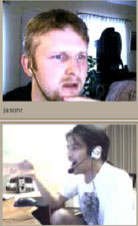
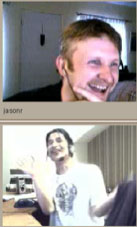
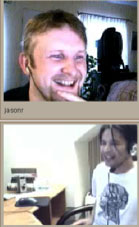
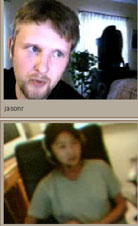
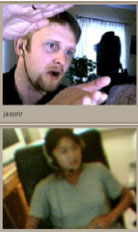
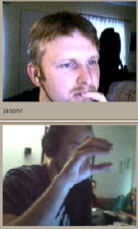
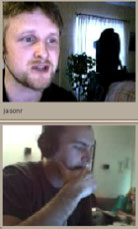
|
What animated character do you best identify with and why?
I would say that I most identify with Chicken Little, and before you say it, it's not because he's short, but because of his optimistic nature. I do my best to remain optimistic and keep my head up, especially when I make mistakes. I always try to live by a motto which reminds me that, everyday is a new day and I should always learn from my mistakes and keep moving forward. Who would you consider your mentor to be in animation? I have many influences, but the biggest influence on my animation career, by far, would have to be Eric Goldberg. Long before I ever met Eric, I studied his notes from a company he had in London called Pizazz. The notes were about his approach to animation and they explained things in a very simple but precise way that I immediately understood. I've kept them throughout my career. When I finally met Eric, I showed him the notes and told him that he was the reason I became an animator. I went on to work with Eric, and together we created the Genie in CG for Aladdin. I was able to read his mind and understood exactly what he wanted because we had the same approach, the same animation language. But, anybody and everybody that has produced great animation has inspired me, from the old Disney guys to my peers with whom I work with on a daily basis. That's because I can analyze their motion frame-by-frame, and study and learn how they drew it. What was your journey in becoming an animator? My journey began back in 1990, in Dublin, Ireland, when I had to choose between graphic design and a new course called character animation at the first college I attended. I was interviewed by former Disney animator Dave Brain. He looked at my portfolio, which had many rendered, everyday observational and life drawings. He thought I would be good at backgrounds or character animation. So, I thought about what my life would be like as a graphic designer, basically designing labels for products, or as a character animator, getting paid for drawing cartoons, and the rest is history. I, much like every 2D animation student, started with the bouncing ball exercise. Not knowing what the heck I was doing, I drew all the frames on the same sheet of paper. Now what??? I really wasn't the brightest when it came to technology and still struggle with it. Anyway, I saw one of my peers drawing his frames on separate sheets of paper and flipping the drawings. I decided to copy him. What I did, though, was draw my animation straight-ahead, one drawing after another. My bouncing ball exercise started at one size and ended up really huge by the end of the shot. Boy this is hard stuff. But learning from my mistakes, I decided to try doing the highs and lows first and then flip them, with the hope that I could maintain some sort of consistency. I think I also traced back over each drawing so I would get the arcs and the volumes exactly bang on. I kept breaking down the movement until I had it all on ones. I shot each frame on our old line tester, which was a very basic camera hooked up to a foot activated, frame-grabber-type machine. The anticipation of seeing my first piece of animation was so great, that I shot my hands a couple of times while placing my drawings down on the pegs. As I was rewinding the tape, I caught a quick glimpse of my work, and then my heart began to beat faster and faster. I finally hit the play button and watched what was less than a second of probably the worst looking bouncing ball animation ever created. But, I didn't care. I made it move. I gave it life. It never existed before I drew it and shot it. From then on, I was hooked. My first actual mentor was Larry Laurea, who took over the animation course at my college from Dave Brain and carried out the curriculum that Dave had set up. The lessons included a series of in-between tests that taught us the basics of arcs, spacing and maintaining volumes, along with the principles of animation. With each test that we were given, we received less and less information, leaving us to experiment with breakdowns. Each student started with the exact same keys, but their end result was completely different because of where and how extreme they drew the breakdowns. The exercises taught me that there really wasn't a wrong way to breakdown animation, just as long as you maintain basic arcs and volumes. Some tests did look better than others, and some were more entertaining than others, depending on how the animator experimented with spacing or how extreme he pushed the arcs. After the first year ended, Larry left to join another animation college in Ireland that was set up by Don Bluth. Larry wanted a lot of us to follow him but for some reason none of us did. Maybe it was out of sheer inertia, but we all stayed where we were. How wrong we were!!!! After Larry left, the course went from bad to worse; the animation paper supply dwindled down to practically nothing. We were faced with a ration of sheets that were unflippable, kind of like tracing paper. On the plus side, we had two very hard working mentors Eamonn Butler (the overall animation supervisor on Chicken Little) and former Bluth animator and now director Paul Bolger. Both of them taught us a great deal about the industry and both had very different approaches to animation. Paul had a very straight-ahead workflow that worked for him and Eamonn was straight up, pose-to-pose. I built a very good relationship with Eamonn and Paul and owe my entire working career to both of them in one way or another. After two years, I had enough of that school, not because of the mentors, but because the management didn't supply any of the materials that we needed. I called Larry over at Don Bluth's college and asked if there was any chance I could enroll there. I wanted to roll over the two years I spent at my first college and enter as a third year student to make a film. Larry knew my animation skills, knew that I was a really hard worker, and probably felt sorry for me. He agreed. The new college was fantastic. It had tons of the latest camera equipment and no shortage of supplies with which to animate and what an atmosphere! It also had the Sheridan curriculum, which I quickly got my hands on and studied. I worked hard, kept my head down and made a five-minute animated film with a story theme with the sole purpose of showing off as my reel. In the film, I tackled a lot of complicated moves like skidding and slipping around corners, a lot of perspective walks, as well as runs and jumps. I designed a character that had lots of secondary actions, and basically tried to cover all aspects of animation, from very broad cartoony actions to slow subtle acting ones (with dialogue thrown in). During my first two years at the new school, I applied, two times, to Don Bluth's company for an in-betweening job and failed both times. After completing my third year film, though, Don gave me an award for best animation of the year, a check for $500 and a job offer as junior animator. But, I turned him down. HA that'll teach him. No really, it actually said something to me about my animation process. I wasn't a very good in-betweener, because I animated my in-betweens, and rarely did direct ones. As a result, I would never make it as someone else's in-betweener. This still holds true today with CG. Those pesky computers don't know how to do in-betweens. Instead, I went to work for Paul Bolger who had set up his own company in Dublin. It was on a film called Felidae, co-produced by a Berlin, Germany-based company called Trickompany. It was a sink or swim animation career opportunity. We were paid only for animation approved by the director, so if our shot didn't get approved, we didn't get paid that week. The experience really taught me to think fast and work rough. Time management was also a big issue (and still is), I needed to show my initial thoughts and very rough blocking to the director early on, and spend the rest of the week nailing down the work and finessing it. That was the way I needed to do it, not by showing what I thought was finished work to the director on a Thursday, only to find out that I had not captured what he had in mind for the shot. That would have left only one day to reconceive and finish the shot, which would never have flied and would have left me unpaid for that week. It was a priceless learning experience and I think has made me a very fast animator. It also was my first time animating four-limbed characters that moved on all fours, no singing and dancing there. After Felidae, the Don Bluth school asked me to come back and teach second year students, part-time. At the same time, I was asked to character design and animation test some 2D characters for Paul's company. So began my teaching career. I found teaching to be very rewarding. I'd see students that struggled so hard to understand the basic principles of animation, and then, what seems like a light bulb turning on, they get it and find themselves completely addicted. After a year of teaching and character development, Eamonn invited me to London to help him on a computer game that he was developing in partnership with a great computer programmer. Eammone actually designed his own CG software for the project. I was intrigued by the idea of computer animation and felt it was worth my while to look into it, but I loved 2D so much and wasn't very technical when dealing with computers that I really had no intention of accepting the job. Eamonn showed me what he was doing and how the software worked. It was super easy to use; I didn't have to type or run scripts. I could just click on a character's arm and move it, or on its hips and rotate them. There was nothing to it, at all. I could rely on my knowledge of animation. It was so cool. In 3D, I could look completely around the character. The believability factor jumped through the roof. The character was no longer just a cartoon, it felt alive, and I could see its dimension, textures, and shadows. But my animation really had to work, and I couldn't do the cheats that I could do in 2D. But then, again, it's hard to draw certain angles in 2D, and in 3D, the character is already there to work with, so the emphasis is more on creating a believable performance rather than artistic ability. I couldn't pass it up. That career move opened a door to a different experience for me. I was working in London for five months getting really into the CG stuff and loving it more and more. I was offered a lot of 2D gigs, but turned them all down. One night I got a phone call from the director of Fantasia, Hendel Butoy, who said that a friend of mine had recommended me as a person who might be interested in working on the next "Fantasia" movie, on a tin soldier sequence. After I picked myself off the floor, it took me two days to put a reel together, send it via over night express and negotiate a contract. They faxed the contract and I signed it and faxed it back. I found myself on a plane to the States a month later, after getting an 01 type Visa to work for Disney. That was December '95. I've spent nearly ten years animating with some of the best talent. Looking back, all I can say is, "Wow, I have learned so much." I have learned from Hendel Butoy, Eric Goldberg, Eric Leighton, the countless animators at Disney, Pixar, PDI, Dre3amWorks and Blue Sky. From here I'm looking forward to learning from Glen Keane on "Rapunzel." Glen often says that he's still a student of animation, and if he is still learning, I would definitely say that I'm only scratching the surface of this exciting career. All the Best, Jason |